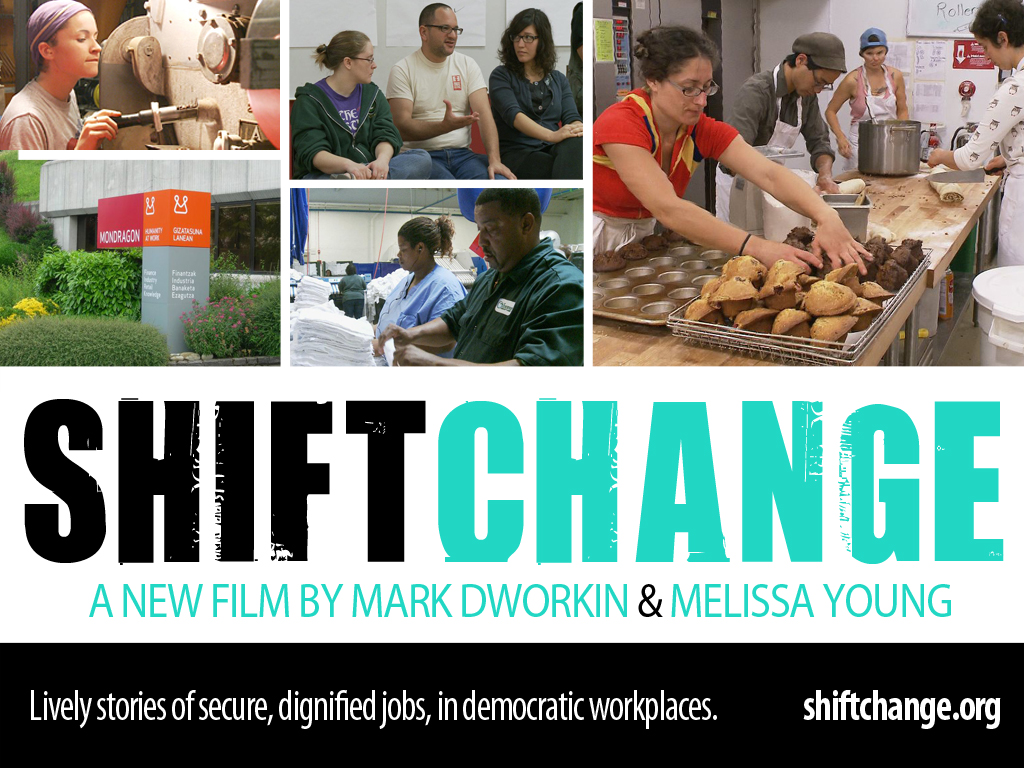The recent decision by Con Agra to shut down its Carriage House plants in Dunkirk and Fredonia, resulting in the loss of over 400 local jobs, reveals once again how decisions made in distant places can have a significant impact on the local economy. But what can be done to bring decision-making, or at least more of it, closer to home? How can workers have more of a say in the direction and future of local enterprises, with an eye towards generating wealth that stays and circulates in their own community?
One possible answer is the worker cooperative (or co-op), a model of employee ownership that will be the center of discussion at the Lenna Theatre in Jamestown Community College’s Hultquist Building this Saturday, April 19, at 1pm. The event, sponsored by JCC and the Jamestown Renaissance Corporation, is open to the public and will include a screening of “Shift Change,” an award-winning documentary on the subject.
Cooperatives are not new or novel. Over 29,000 business cooperatives operate in the United States today, employing over 2 million people and generating $652 billion in annual sales.
Nor is the model new to Jamestown and Chautauqua County. Over a century ago, the worker co-op model was frequently used by groups of skilled Swedish woodworkers to raise the capital necessary to get a new furniture venture off the ground. They would pool their money and form a company in which each worker held shares, giving every employee/owner a powerful incentive to see the company compete and thrive.
In the 1970s, as waves of plant shutdowns and layoffs hit communities across the country, interest in the co-op model was revived. At the national level, employee stock ownership plans (or ESOPs) were written into the federal tax code as a type of retirement plan that allowed a company’s employees to become owners. To many, ESOPs were seen as a way to transition company ownership voluntarily from the founder to the workers–an alternative to the risks encountered when a company was simply sold off to another company.
The ESOP movement, which had support from both ends of the political spectrum because it empowered workers and promoted private investment, coincided with efforts locally to foster greater collaboration between employees and owners. The Jamestown Area Labor-Management Committee, coordinated by Mayor Stan Lundine, became a national model for bringing both sides together to find solutions that were mutually beneficial to workers and companies.
Today, there are familiar examples of cooperatives in our midst. Everyone who banks at a credit union participates in a consumer cooperative. True Value and Ace Hardware are purchaser cooperatives. Upstate Farms and the Westfield-based Grape Growers Cooperative are both examples of producer cooperatives.
Worker cooperatives, though, are the fastest growing type of co-op, with new companies forming around the country as co-ops or established companies transitioning from family-owned to worker-owned. Examples range from the three-employee BreadHive Bakery in Buffalo (a participant in the April 19 event at JCC) to the New Belgium Brewing Company, the eighth largest brewer in the U.S. with nearly 500 employee/owners.
Locally, this model has the potential to become an important part of the area’s economic development toolbox. Whether as a way to put small new businesses on a more sustainable footing, or preserving jobs by helping proprietors safely transition their businesses when they or their families decide to move on, co-ops present an opportunity to boost local entrepreneurship and cultivate a stronger and more stable economy.
To join the local conversation on co-ops, attend the April 19 event at JCC or feel free to contact us directly.
This post appeared in The Post-Journal on April 14, 2014, as JRC’s biweekly Renaissance Reflections feature.
You can watch the trailer to the documentary “Shift Change” below.

